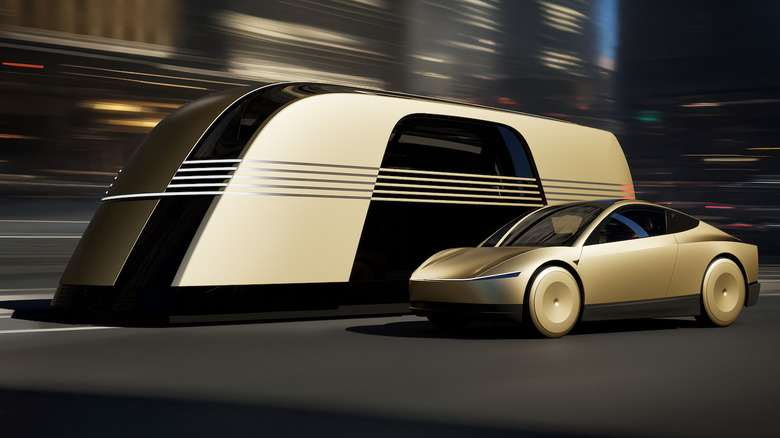On Wednesday, Elon Musk, CEO of Tesla, announced ambitious plans to introduce driverless ride-hailing services in California and Texas by next year. During Tesla’s quarterly earnings call, Musk expressed confidence that the company would be able to offer paid rides using fully autonomous Teslas in the near future. Currently, Tesla has been running a limited app-based ride-hailing service for employees in the San Francisco Bay Area, which serves as a precursor to the broader public rollout Musk envisions. This announcement builds on Musk’s previous statements made at a recent robotaxi event, where he indicated that “unsupervised” self-driving capabilities in select Tesla vehicles could be ready by 2025.
However, achieving this goal will likely involve overcoming significant regulatory hurdles, particularly in California, where the company will need to secure various permits to operate fully autonomous rides for paying customers. Competitors like Alphabet’s Waymo have demonstrated the challenges associated with this process, as Waymo spent years accumulating millions of miles in testing before it was able to secure its first permit from the California Public Utilities Commission (CPUC), which governs ride-hailing operations in the state. At the same event where Musk made his earlier commitments, he unveiled a prototype two-seater, two-door “Cybercab” devoid of steering wheels and pedals, designed to navigate using advanced camera systems and artificial intelligence.

Acknowledging the complexities involved in obtaining regulatory approval in California, Musk stated, “It’s not something we totally control,” but he remained optimistic, adding, “I would be shocked if we don’t get approval next year.” Meanwhile, Ross Gerber, a Tesla shareholder and CEO of Gerber Kawasaki Wealth and Investment Management, noted that navigating the regulatory landscape is notoriously challenging, cautioning that it should not be considered an easy task. Texas, on the other hand, presents a more favorable environment with fewer regulatory requirements for autonomous vehicles, although companies typically engage in lengthy testing periods before launching paid services.
In the U.S., regulations governing the deployment of autonomous vehicles are primarily determined by individual states, which means companies must adapt to various local laws and requirements. Musk proposed a “national approval process for autonomy” to streamline this complex landscape. Tesla’s ambitious plans hinge significantly on its advanced driver assistance system, known as Full Self-Driving (FSD), which is critical to the company’s robotaxi aspirations. However, the FSD has come under scrutiny from regulators, particularly following a recent investigation launched by the U.S. National Highway Traffic Safety Administration (NHTSA) into 2.4 million Tesla vehicles equipped with this technology. This investigation was prompted by four reported collisions involving FSD, including a fatal accident earlier this year.
Despite the regulatory scrutiny and technical challenges, the prospect of Tesla launching a robotaxi fleet has had an impact on the stock market. Following Musk’s announcement, shares of competing ride-hailing companies Uber and Lyft experienced a decline of 2.3% in post-market trading, reflecting investor concerns about potential competition from Tesla’s autonomous ride-hailing services. As Tesla moves forward with its plans, the interplay between innovation, regulation, and market dynamics will be critical in determining the success of its driverless ride-hailing venture. Musk’s optimistic timeline for rolling out these services will be closely watched, as both investors and regulators evaluate the feasibility and safety of Tesla’s ambitious ambitions in the autonomous vehicle space.

This ambitious initiative is not merely about enhancing Tesla’s service offerings; it also represents a broader vision of the future of transportation, where autonomous vehicles could redefine mobility and transform urban landscapes. As public interest in electric and autonomous vehicles grows, Tesla’s efforts could serve as a catalyst for the industry’s evolution, potentially reshaping how people think about and interact with transportation options. By striving for innovation in ride-hailing services, Tesla is not just positioning itself as a leader in the electric vehicle market but also as a pioneer in the emerging field of autonomous transportation.
However, this vision is tempered by the reality of regulatory processes and the need for public acceptance of autonomous technologies. The experience of Waymo and other companies indicates that patience and extensive testing are essential for achieving widespread adoption of driverless services. Musk’s promise of a swift rollout may be optimistic, yet it underscores Tesla’s commitment to pushing the envelope in the development of self-driving technologies. As the company prepares for a potentially transformative year ahead, the stakes are high, not only for Tesla’s financial performance but also for the future landscape of mobility. The interplay between technology, regulation, and market response will shape the trajectory of Tesla’s autonomous ride-hailing services as the company navigates the complexities of this rapidly evolving industry.




